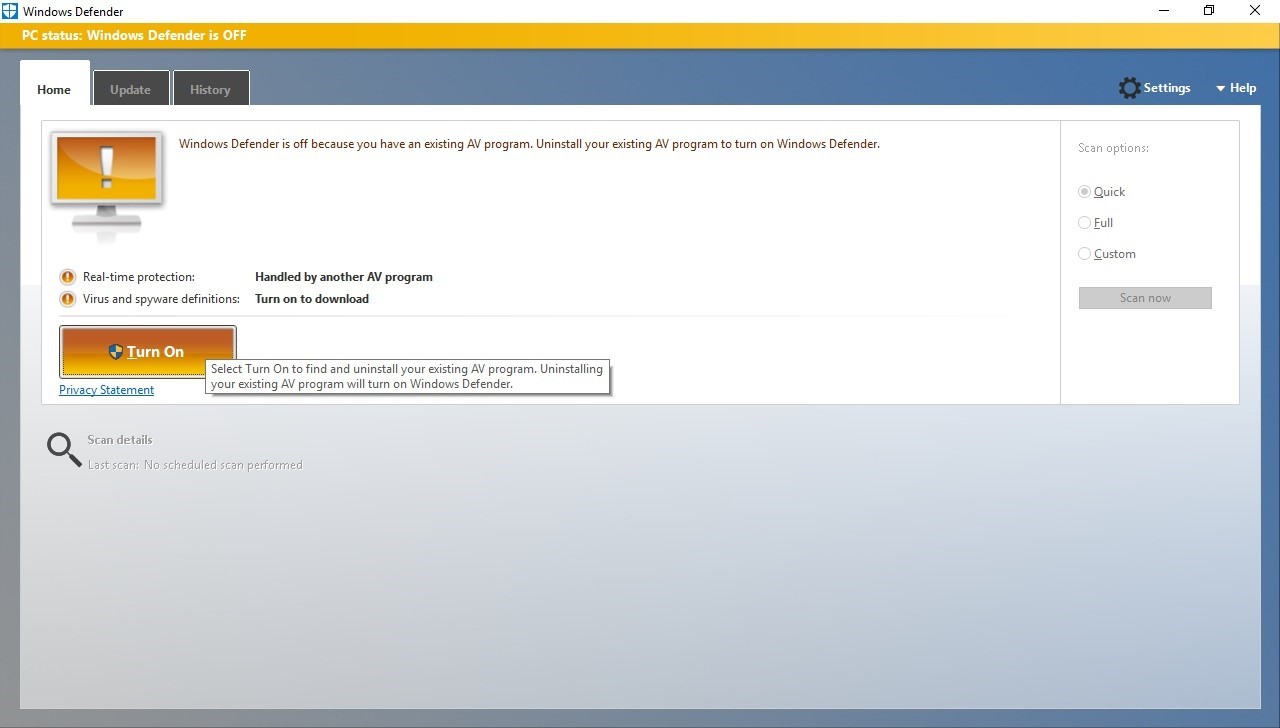
Windows 10 does disable third-party anti-virus software, Microsoft acknowledged in a
statement released yesterday. But this is done for very short periods of time, and not because of competition, but solely for the benefit of users, in order to update this software itself.
Details of the interaction of Windows 10 with third-party antivirus software surfaced, because Microsoft is now faced with antitrust prosecution by Kaspersky Lab on charges of unfair competition. Kaspersky Lab believes that the Redmond giant does with antivirus products what it has already done once with browsers. Recall that it once embedded Internet Explorer in Windows, thereby killing Netscape Navigator. Now she has introduced Windows Defender into her system, which threatens the business of Kaspersky Lab and other developers of independent anti-virus products.
Fearing a similar development of the situation, Kaspersky Lab filed a complaint against Microsoft, accusing it of unfair competition. Claims are filed in Russia, the European Union and separately in Germany. These are complaints to the relevant antimonopoly services - the Federal Antimonopoly Service of Russia, the European Commission and the Federal Cartel Office of Germany.
The reasons for filing complaints against Microsoft were detailed
in his blog by Yevgeny Kaspersky. He noted that even when switching to Windows 10, the system automatically and without any warnings deletes all "incompatible" antiviruses, and instead installs its Windows Defender. But what compatibility could be expected if independent developers were given just one week before the release of the new OS to make their products compatible (the testing period was reduced from two months to one week)? But even if compatibility has been tested, it still sometimes deactivates products - and Defender takes their place. Further - worse. It would seem that a third-party antivirus is compatible, installed and working - there should be no problems. But even in this situation, Windows 10 often often displays messages to the user that Windows Defender cannot start because a third-party anti-virus product is running on the system. Yevgeny Kaspersky considers this abnormal. He also mentions a large “Turn On” button that activates Microsoft's proprietary antivirus. “Of course, many users will be inclined to press this button,” Eugene writes, “Well, it’s from Microsoft — those who make this OS; it should be a good thing; there’s no harm in turning it on just in case.” In fact, pressing the big yellow button again deactivates the third-party antivirus, but this is reported only in the tiny text in the contextual pop-up menu.

Kaspersky also complained that Windows 10 is hiding somewhere in the jungle of the Windows Security Center notifications about the end of subscription to a third-party antivirus. And if the user does not renew the subscription, then again, Windows Defender is activated. Another small complaint was that due to the restriction on the number of simultaneously installed antiviruses (this restriction makes sense) after the trial period of the demo version of some antivirus, Windows 10 disables not only this trial, but both antiviruses - and again activates windows defender.
In yesterday's
post in the official blog, Microsoft seems to be trying to go to the world. The company explains that it had no choice but to integrate the antivirus into the operating system, because the risks to information security in the modern era are too great. The recent epidemic of WannyCry has shown that any unprotected computer can be a victim. More than 300,000 new malware samples are being created and distributed daily in the world.
At the same time, Microsoft supports a rich ecosystem of third-party antivirus software. More than 80 independent developers participate in the Microsoft Virus Initiative (MVI). This is a technical program where Microsoft sends antivirus developers key technical details about their technologies in order to more effectively detect viruses under Windows.
Microsoft says it has recently doubled its efforts to help antivirus software developers. By the time the last Windows 10 Creators Update was released, 95% of third-party antiviruses were already compatible with the update. For a small number of the rest, which still needed to be updated after installing Windows 10 Creators Update, the system also implemented the same module that temporarily disables the functionality of the antivirus during the update, as mentioned at the beginning of the article. This module was created in partnership with antivirus developers for their own good.
Perhaps, Kaspersky Lab will be difficult to achieve a positive decision on the subject. It seems that Microsoft really has nothing against third-party antiviruses, and implemented its Windows Defender for those who have nothing else.